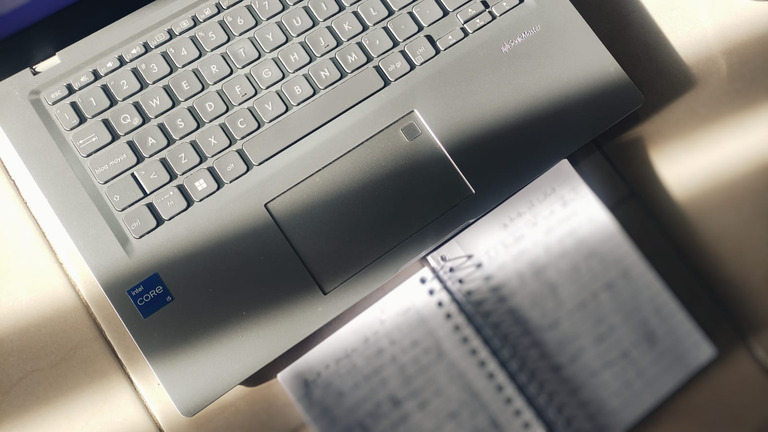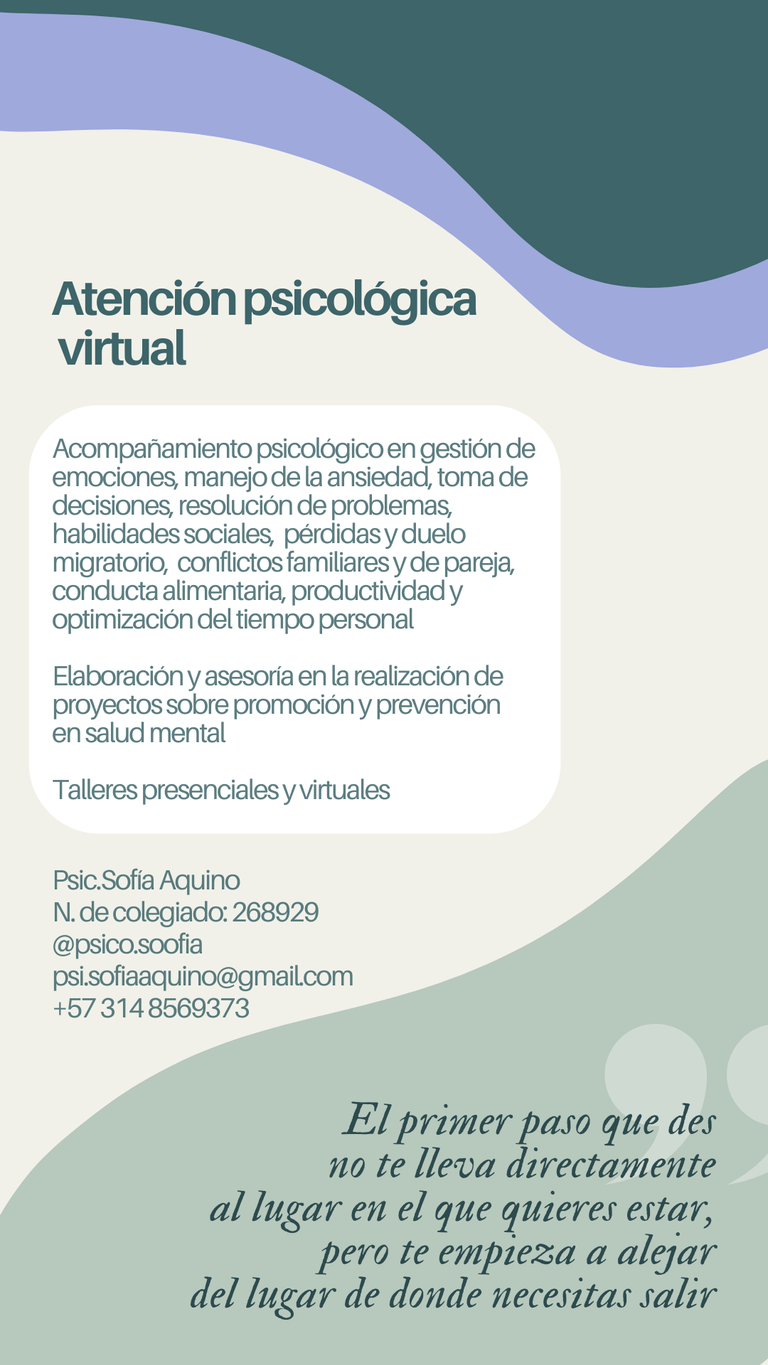
¿Tienes idea de cuántas horas al día inviertes frente a un dispositivo electrónico (celular, computador, tablet, televisor)? Algunos dispositivos arrojan esta información, con datos de conexión al día, estadísticos y porcentajes no solo diarios sino también a nivel semanal o mensual, lo que nos permite comparar y entender nuestro comportamiento ante la tecnología en función de una época del año o ante un episodio particular que se presente en nuestra vida.
Tener acceso a esta información, aunque por un lado nos permita crear conciencia sobre el uso y abuso de la tecnología y redes sociales, también es una información que puede llegar a preocuparnos. El tiempo es tan subjetivo que no solemos darnos cuenta de las horas que pasamos frente a una pantalla, muchas veces las razones son justificadas: "es parte de mi trabajo", "es la manera de conectar y mantener los vínculos con ciertas personas", "es el canal que utilizo para aprender, informarme, distraerme, relajarme..." Ciertamente, algunas actividades requieren indispensablemente del uso de la tecnología, otras quizás podríamos alternarlas con formas más tradicionales que nos conecten con el mundo que existe fuera del cuadro iluminado de una pantalla.
Hacer pausas de la tecnología puede traernos algunos beneficios para la salud física y mental. Para lo primero, la vista descansa, así como las articulaciones y zonas del cuerpo que se ven más comprometidos cuando pasamos horas frente a una pantalla: muñecas, manos, dedos, cuello, espalda. También pasamos de un comportamiento sedentario a uno más activo, hay que recordar que el movimiento corporal es vida y estamos hechos para mantenernos en movimiento. Además, disminuir el uso de pantallas, sobre todo al final del día, puede hacer que el sueño sea de mejor calidad, más reparador.
A nivel mental, también traerá algunos beneficios, sobre todo, si se sustituye por actividades que impliquen la interacción interpersonal, el contacto con la naturaleza Y/o el placer y la relajación. Cuando disminuimos el uso de pantalla podemos conseguir una mejora del estado de ánimo, disminución del estrés y la ansiedad, aumento de la creatividad, mayor conexión con el momento presente, y, en consecuencia, una mayor sensación de bienestar en general.
Es una decisión personal el tomar el primer paso para diminuir la exposición a las pantallas. Si pudiese sugerir algo, diría que no se realice un cambio drástico de la noche a la mañana, y que convendrá más bien hacer la disminución de forma progresiva. Para eso, lo primero sería identificar el tiempo total invertido en los dispositivos electrónicos y, posteriormente, proponerse metas pequeñas pero alcanzables. Por ejemplo, disminuir media hora de exposición a la semana, hasta alcanzar un número que se ajuste a nuestras necesidades y responsabilidades, pero sin que implique pasar más de la mitad de nuestro día frente a las luces azules de las pantallas.
Para garantizarnos más interacciones cara a cara y menos pantallas, podemos poner en práctica las siguientes recomendaciones:
- No usar dispositivos electrónicos ni las primeras ni las dos últimas horas del día
- Apagar notificaciones cuando estemos realizando actividades que no requieran del uso de tecnología
- Tener momentos de desconexión total, al compartir con personas o hacer un deporte
- Programar las aplicaciones para que se cierren después de un tiempo determinado de uso
- Practicar el minimalismo tecnológico, en cuanto a aplicaciones, descargas, páginas web y redes sociales que utilizamos
- Enriquecer nuestra vida fuera del mundo virtual


Do you have any idea how many hours a day you spend in front of an electronic device (cell phone, computer, tablet, TV)? Some devices provide this information, with daily connection data, statistics and percentages not only daily but also on a weekly or monthly basis, which allows us to compare and understand our behavior before technology according to a time of the year or a particular episode in our lives.
Having access to this information, although on the one hand allows us to raise awareness about the use and abuse of technology and social networks, it is also information that can cause us to worry. Time is so subjective that we do not usually realize how many hours we spend in front of a screen, often the reasons are justified: "it is part of my job", "it is the way to connect and maintain links with certain people", "it is the channel I use to learn, inform myself, distract, relax...". Certainly, some activities indispensably require the use of technology, others perhaps we could alternate them with more traditional ways that connect us with the world that exists outside the illuminated frame of a screen.
Taking breaks from technology can bring us some benefits for our physical and mental health. For the former, our eyesight rests, as well as the joints and areas of the body that are most compromised when we spend hours in front of a screen: wrists, hands, fingers, neck, back. We also move from a sedentary behavior to a more active one, we must remember that body movement is life and we are made to keep moving. In addition, reducing the use of screens, especially at the end of the day, can make sleep better quality, more restful.
On a mental level, it will also bring some benefits, especially if it is replaced by activities that involve interpersonal interaction, contact with nature and/or pleasure and relaxation. When we decrease screen use we can achieve improved mood, decreased stress and anxiety, increased creativity, greater connection with the present moment, and, consequently, a greater sense of well-being in general.
It is a personal decision to take the first step to decrease screen exposure. If I could make a suggestion, I would say not to make a drastic change overnight, but rather to make the decrease gradually. The first step would be to identify the total time spent on electronic devices and then set small but achievable goals. For example, reducing half an hour of exposure per week, until we reach a number that fits our needs and responsibilities, but without spending more than half of our day in front of the blue lights of the screens.
To ensure more face-to-face interactions and fewer screens, we can implement the following recommendations:
- Do not use electronic devices either the first or the last two hours of the day.
- Turn off notifications when we are doing activities that do not require the use of technology.
- Have moments of total disconnection, when sharing with people or playing sports.
- Schedule applications to close after a certain amount of time of use.
- Practicing technological minimalism in terms of applications, downloads, websites and social networks we use.
- Enrich our life outside of technology.

Todas las imágenes de esta publicación son de mi autoría, editadas en snapseed y canva. El contenido también es original y propio.
All images in this post are my own, edited in snapseed & canva. The content is also original and mine.
Posted Using InLeo Alpha
Estoy de acuerdo contigo, además de que el uso permanente de la dispositivos afecta negativamente nuestra salud, también esto ha permitido que se pierda el contacto humano.
Si, en la era de la hiperconectividad, estamos cada vez más desconectados de nuestras relaciones...
Congratulations @sofiaquino98! You have completed the following achievement on the Hive blockchain And have been rewarded with New badge(s)
You can view your badges on your board and compare yourself to others in the Ranking
If you no longer want to receive notifications, reply to this comment with the word
STOPCheck out our last posts: